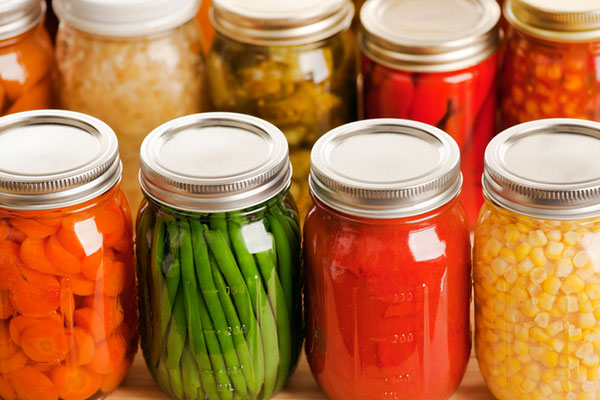I welcome you all to a brand new day in this brand new week. Last week, I asked about your food resolutions. Have you made them yet? Or are you still in the process of making them? Well, my resolution as your food columnist is to keep supplying you with ogbonge recipes, tips and other valuable information that will promote healthy consumption and good health.
Read more about Food
This resolution is what has prompted the canned versus jarred food discussion. Both canning and jarring are methods of food preservation. Today, these two similar methods of food preservation will be reviewed under four critical subheadings, the durability of food content once opened, reusability of the container, content visual assessment, and health.
A Brief History of Food Jarring and Canning
Before we go into this topic proper, we’ll tell you a very short story on how these two methods of food preservation came into existence. The story of the invention of canning and jarring as a safe method of food preservation cannot be told without the mention of Napoleon Bonaparte. He was a French Emperor and military leader who led so many successful campaigns during the French revolution and revolutionary wars.
He had a large army and he desired to see them eat healthy meals even while on military campaigns. Thus, in 1795, he offered a reward of twelve thousand francs to anyone who could invent a new method of food preservation for his travelling army. In 1809, Nicolas Appert won the reward; he introduced heat processing food in glass jars.
A year later, Peter Durand introduced the first true canning method when he introduced a method of sealing food in unbreakable tin cans. Since these notable inventions, the jarring and canning methods of food preservation has evolved to what it is today. Now, we would be comparing these two methods of preservation using the above-mentioned pedestal.
Content Visual Assessment
With jarred foods, you only need to look to know exactly what you are getting. That’s because they come in transparent containers which make it easy to see the content and the quantity. Things are however different with cans. You can’t tell if it’s underfilled, if it looks good or if it contains something that shouldn’t be there. Therefore, you have to rely on the label to inform you of its content.
Sign up to the Connect Nigeria daily newsletter
The Durability of Food Content Once Opened
Usually, when canned food is opened, it has a short storage time; its content is emptied and the can is to be disposed within the shortest possible time. But this is not the case with jarred foods. Once jarred food is opened, there is no pressure to use the content at once. This is because jarred foods can be resealed and refrigerated, a fact that allows it to remain fresh for the next use.
Reusability of Container
Once the can is emptied of its content, the can is disposed of. But when jars are emptied, the jar doesn’t have to be tossed. It can be washed and repurposed. Take mayonnaise jars, for instance, people use it to store sugar, milk and to preserve ground fresh tomatoes.
Health Concerns
Cans for food are typically made of aluminium. When they are prepared to be filled with food, the insides are coated with epoxy resin as a way to seal in the food. These resins contain a chemical compound known as BPA and it has the potential to seep into food which it is exposed to in cans.
In fact, research indicates that BPA consumption can result in health issues; for instance, it can have a negative effect on the brain, behaviour and prostate gland of foetuses, infants and children. It is also associated with increased blood pressure. Jars, on the other hand, do not leach poison into food products.
One can therefore conclude from this review that even though both methods of food storage are convenient and affordable, jarring is a better alternative to canning.
References
Healthline
The Provident Prepper
Randall Beans
Serrats
Featured Image Source: CDC
Got a suggestion? Contact us: [email protected]

